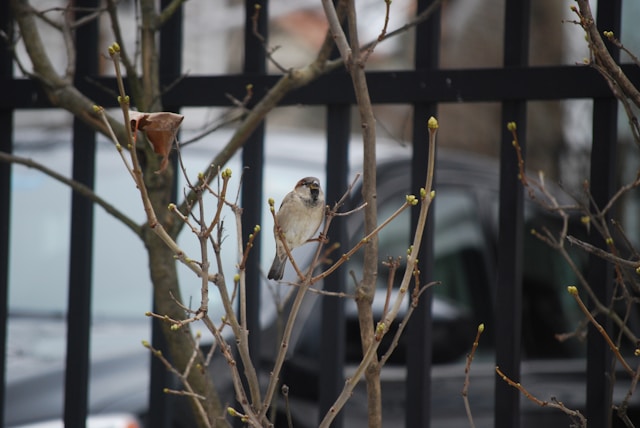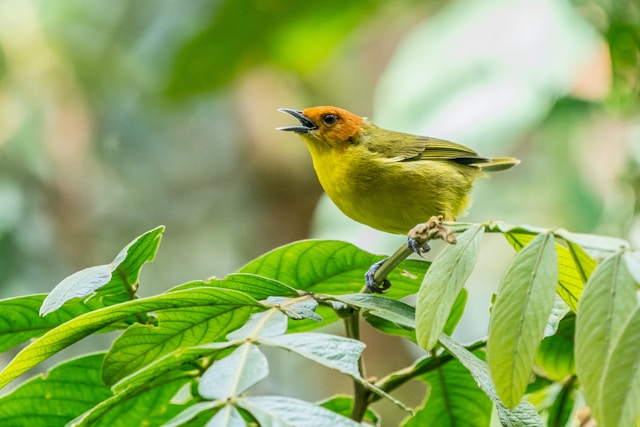Nature is full of sounds that stir our senses and evoke a sense of peace and wonder. The melodic songs of birds stand out as a universal symbol of nature’s beauty.
However, these captivating melodies are more than just background music—they are vital communication tools that play essential roles in birds’ lives. In this blog post, we’ll explore the fascinating world of bird songs, uncovering why these creatures sing and what their songs mean in nature’s grand symphony.
The Purpose of Bird Songs: More Than Just Pretty Sounds
While bird songs are beautiful to human ears, these melodies serve specific and crucial purposes for birds. Here are some key reasons why birds sing:
1. Establishing Territory: “This Land is Mine”
One of the most common reasons birds sing is to establish territory.
A song announces, “This is my space,” to other birds, deterring potential rivals from encroaching on their nesting or feeding grounds.
Male birds, in particular, use songs to mark their territory, sending a clear message to other males that the area is already claimed.

2. Attracting Mates: Love Songs of the Avian World
Bird songs are often used as courtship displays to attract mates. Male birds with the most complex or beautiful songs are typically more successful in attracting female partners.
In many species, a song’s complexity or strength indicates a male’s fitness and genetic quality, helping females choose the best mate for producing healthy offspring.
3. Communication Among Flock Members: Staying Connected
Birds also use songs and calls to communicate with their flock. These vocalizations can warn of predators, calls to gather food or ways to keep track of one another in dense foliage.
For example, a bird might use a specific call to alert others of a nearby predator, helping to protect the group.
For example, seagulls, often seen soaring along coastlines, are known for their distinctive calls rather than melodious songs. Unlike songbirds, seagulls communicate using a variety of squawks, screams, and other vocalizations.
These sounds serve crucial purposes, such as warning of danger, establishing territory, or calling to mates and young. Seagulls are highly social birds, and their vocalizations are essential in maintaining group cohesion, alerting each other to food sources, and defending their nesting areas from intruders.

Though not conventionally melodic, seagull calls are integral to the coastal soundscape, reflecting the dynamic and often harsh environments in which they live.
4. Learning and Mimicry: Nature’s Great Imitators
Some birds, like mockingbirds and lyrebirds, are known for mimicking other species’ songs and even human-made sounds like car alarms or phone ringtones.
This mimicry can serve various purposes, such as confusing predators, impressing mates, or establishing their vocal prowess. Learning songs is also crucial for young birds, who often learn by listening to and mimicking adults in their species.
Ducks communicate through a range of quacks, whistles, and grunts, with each sound serving specific purposes like mating calls, warning signals, or keeping the flock together.
Female ducks, particularly mallards, are known for their loud quacks. At the same time, males often produce softer and quieter sounds, creating a unique vocal dynamic that plays a vital role in their social interactions.
The Science Behind Bird Songs: How Do They Do It?
Birds produce their songs using a specialized vocal organ called the syrinx, located at the base of the trachea.
Unlike the human larynx, the syrinx can simultaneously produce two notes, allowing birds to create complex and harmonious melodies. The brain precisely controls this vocal organ, enabling birds to produce specific sounds, rhythms, and pitches.
Learning these songs can be intricate. For many species, young birds undergo a learning phase where they listen to adult models, practice their songs, and gradually perfect them.
This learning process is crucial as it directly impacts their ability to attract mates and establish territories later in life.
Bird Songs and the Changing Environment: A Symphony Under Threat
As beautiful as bird songs are, they face growing threats from habitat loss, pollution, and climate change. Urban noise pollution, for example, can interfere with birds’ ability to hear each other’s songs, leading to communication breakdowns that can affect mating success and territory defence.

Moreover, climate change can alter migration patterns and breeding seasons, disrupting the timing of bird songs. Some species adapt by shifting their song frequencies or singing at different times of the day, but these changes highlight the challenges birds face in an increasingly noisy and altered world.
How We Can Help Preserve Nature’s Symphony
Preserving bird songs means protecting the environments where these birds thrive. Here are some ways you can help:
- Support Conservation Efforts: Donate or volunteer with organizations dedicated to bird conservation and habitat restoration.
- Create Bird-Friendly Spaces: Plant native trees and shrubs, provide water sources, and avoid using pesticides to create a safe environment for birds in your garden or community.
- Reduce Noise Pollution: To help birds communicate effectively, be mindful of noise levels in outdoor spaces, especially near-natural habitats.
- Participate in Citizen Science: Join birdwatching groups or use apps like eBird to contribute to bird population data, helping scientists track species’ health and behaviour changes.
Conclusion: A Call to Listen and Protect
Bird songs are a vital part of the natural world—a complex and beautiful form of communication that enriches our environment.
Understanding these melodies helps us appreciate birds’ intricate lives and the critical roles they play in ecosystems. By listening closely and taking steps to protect bird habitats, we can help ensure that nature’s symphony continues for generations to come.
So next time you hear a bird singing, pause and appreciate the rich tapestry of communication in the trees above—a reminder of the beauty and complexity of the natural world.
